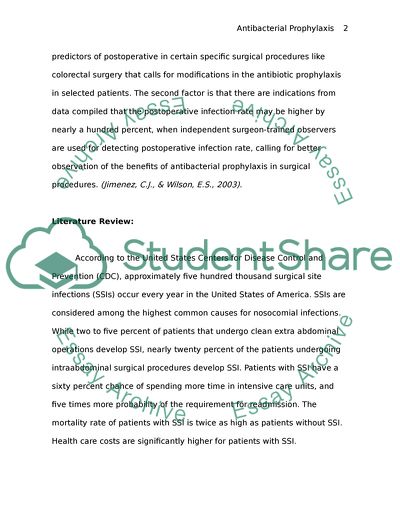Cite this document
(Antibacterial Prophylaxis Essay Example | Topics and Well Written Essays - 2500 words, n.d.)
Antibacterial Prophylaxis Essay Example | Topics and Well Written Essays - 2500 words. https://studentshare.org/health-sciences-medicine/1704945-research-utilization-project-antimicrobial-prophylaxis-for-surgery
Antibacterial Prophylaxis Essay Example | Topics and Well Written Essays - 2500 words. https://studentshare.org/health-sciences-medicine/1704945-research-utilization-project-antimicrobial-prophylaxis-for-surgery
(Antibacterial Prophylaxis Essay Example | Topics and Well Written Essays - 2500 Words)
Antibacterial Prophylaxis Essay Example | Topics and Well Written Essays - 2500 Words. https://studentshare.org/health-sciences-medicine/1704945-research-utilization-project-antimicrobial-prophylaxis-for-surgery.
Antibacterial Prophylaxis Essay Example | Topics and Well Written Essays - 2500 Words. https://studentshare.org/health-sciences-medicine/1704945-research-utilization-project-antimicrobial-prophylaxis-for-surgery.
“Antibacterial Prophylaxis Essay Example | Topics and Well Written Essays - 2500 Words”. https://studentshare.org/health-sciences-medicine/1704945-research-utilization-project-antimicrobial-prophylaxis-for-surgery.


